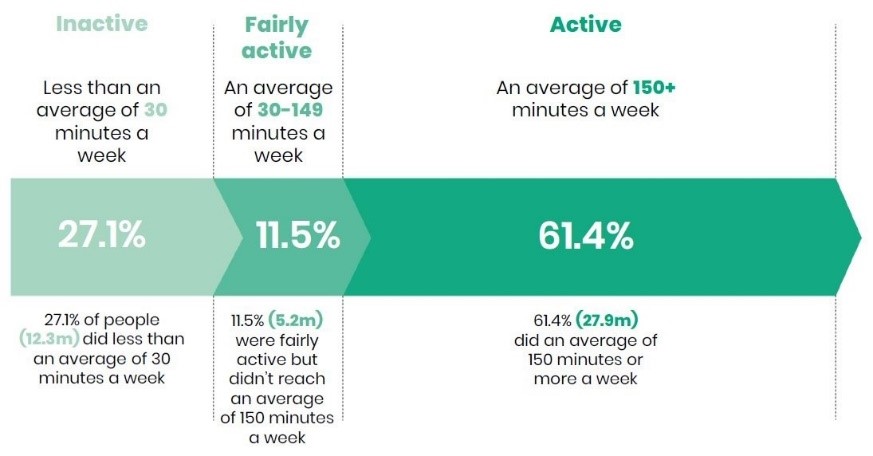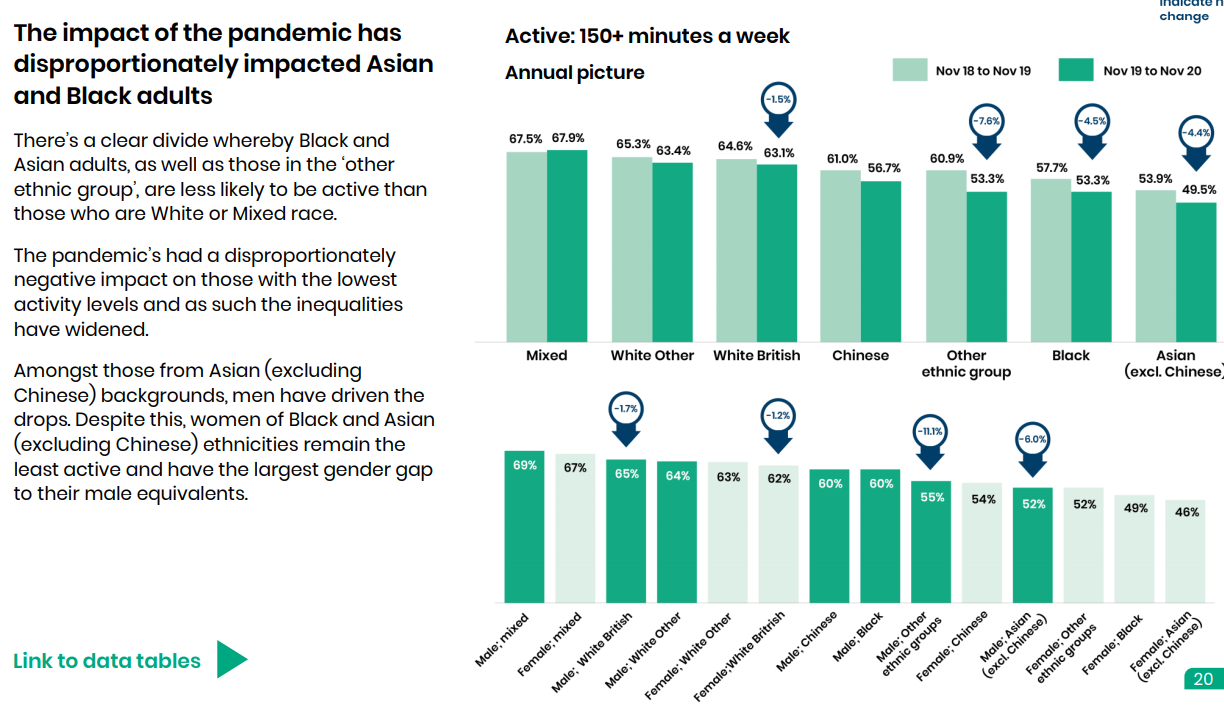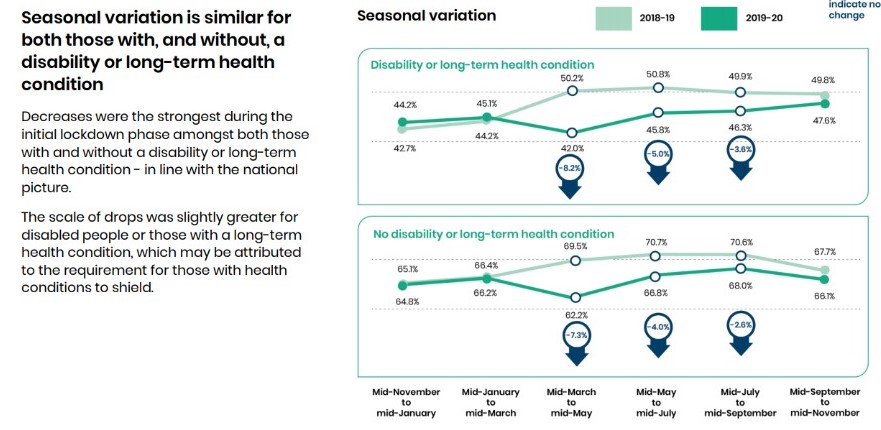According to Sport England’s latest Active Lives Adult Survey, the coronavirus pandemic has contributed to a decrease in the number of adults classed as active, and an increase in the number of adults classed as inactive in England.
Findings show a 1.9% decrease in the number of active adults between mid-November 2019 and mid-November 2020 compared to the previous 12 months. During this period, the number of inactive adults increased by 2.6% (1.2m).
Locally, three of the four unitary authorities covered by Wesport followed the national trend. However, North Somerset saw an increase in number of active individuals, a huge positive considering the circumstances of the last year.

Some of the other main findings from the survey can be seen below:
- Males (-8.9%) showed a steeper initial decline in activity levels than females (-5.4%) between mid-March and mid-May. Some recovery is seen as restrictions were eased, with males showing signs of a quicker recovery
- The proportion of adults aged 16-34 who are active fell by 408,000 compared to 12 months ago
- The number of active adults aged 55-74 and 75+ had been growing pre-pandemic, but as a result of coronavirus the majority of this progress has been lost
- Adults in lower socio-economic groups, those with disabilities or long-term health conditions, and individuals of Black or Asian (excluding Chinese) backgrounds were impacted most negatively following the initial lockdown
- There was a large decrease in participation in swimming, racket sports and team sports as a result of reduced availability, while participation numbers in walking, cycling for leisure and running increased


Tim Hollingsworth, Chief Executive at Sport England, said “We know the pandemic has had a huge impact on people’s ability to engage in sport and physical activity, but the reality is it could have been worse. It is encouraging to see in the survey that so many still found ways to be active despite the majority of opportunities being unavailable or severely restricted.
Alongside the support that we were able to offer, the response of the sector has been remarkable, and I pay tribute to everyone who has worked so hard to keep sport and physical activity going despite the most challenging situation of our lifetime.
However, today’s report has also reminded us that not everyone has been impacted equally and we owe it to the groups disproportionately affected – women, young people, disabled people, people with a long-term health condition, and those from a Black or Asian background in particular – to do everything we can to help them to return to activity in the coming weeks and months.”
For more information and to read the full report from the Active Lives Survey, take a look at the Sport England website here.